The SR-71B takes the concept of portable balanced amplification that was first introduced in the Protector and upped it even more. Reading the product information on RSA’s website will leave you drooling. Quad mono amplifier sections to handle each of the four section balanced signals separately and an addition of quad output buffers for increased current capability. Single ended signals go through two phase splitter chips to create a fully balanced signal out of them. RSA claims the best in terms of PCB quality, opamps, capacitors, and resistors. Compared to the earlier, legendary portable SR-71a, the SR-71B have higher power output, fully balanced drive, rechargeable batteries (one of the big shortcomings of the SR-71A), AND a thinner and shorter case.
And to top everything off is a quote from Ray’s website:
There is no headphone ever made that SR-71B can’t drive with great authority & control. It will stand toe to toe with best balanced home amps out there.
I am going to skip through the formalities and go straight to the comparisons.
RSA SR-71B vs RSA Protector
If you currently own the RSA Protector, then moving to the SR-71B will give obvious improvements in sound quality while retaining pretty much a similar signature. I don’t know if the improvements are due to the quad mono topology, or if Ray had implemented some other design changes in the amplifier. With the HD650 headphone in balanced, I am hearing a wider soundstage, much improved instrument separation, and a more open sound. On the HD800, the difference becomes even more pronounced. While the RSA Protector’s soundstage feels like a small blob, the SR-71B’s extend very wide, filling the whole space of the HD800’s huge earcups. Instruments very clearly projected from the black background. This, of course, is aside from the improvements in power output ratings, which again you get with the SR-71B. If you own a Protector, definitely go for an upgrade!
RSA SR-71B vs RSA SR-71A
A more interesting comparison is with the SR-71A amplifier, which is the best single ended portable amp you can find on Ray’s line up. Both carries the SR-71 “Blackbird” code, indicating serious level of performance. While generations apart, both amps are still well within the RSA house sound that is warm, dark, and bottom heavy. However, the 71B and the 71A has a lot of differences when it comes to A-Bing between the two of them.
With the SR-71B’s balanced drive, you get a better pace and ultimately a better PRaT, especially for driving a laid-back headphone like the HD650. Where the SR-71A is very graceful and smooth, it does not add anything in terms of PRaT. The SR-71B also has a more forward presentation compared to the relatively laid-back SR-71A. In short, the SR-71B makes music more lively, where the SR-71A is more mellow and more refined.
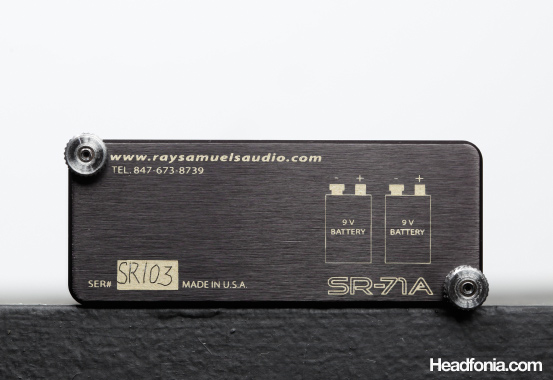
Two 9V batteries with no charging mechanism on the SR-71A. Be prepared to unscrew those locks daily.
Aside from advantages of having rechargeable batteries on the SR-71B, and a line in port in the back (which I prefer over having both in and out jacks in the front), the SR-71A is actually more preferable for my music. Here is why: I listen to a lot of live recordings, and so soundstage portrayal is more important to me than pace or PRaT. Besides, most of my music are relatively moderate in pace. On the SR-71B, you get a wider soundstage due to the balanced drive. Although this gives an impression of a bigger soundstage on short listens, longer listens reveals that the soundstage is less coherent as the presentation is panned hard to the left and right sides.
On the SR-71A, the soundstage is slightly narrower, but is actually bigger overall due to the much better depth. The width is still very wide, and quite wide to fill in the huge HD800 soundstage. With the SR-71A, I also get better coherence in the soundstage imaging, better center focus, and better ambiance than on the SR-71B. Now that last part is very important for live recordings, though studio recorded music are less critical of those factors.
My experience with balanced amplifiers tell me that the more the parts count on an amplifier, the more variances on transistors, resistors, chips, and the harder it is to get a coherent imaging (which you get by perfect symmetry between the left and right channel). In this sense the simpler amplifier would do better, as there are less variances in the parts. There arguments are equally strong for both sides, but I just want to brought this up to show how the SR-71A and the SR-71B demonstrates this fact very well, but still within the same RSA house sound signature. Very interesting indeed, and I am most fortunate to have both amps in my possession to be able to switch back and forth between the two.
BALANCED vs UNBALANCED SOURCE
The SR-71B comes with two inputs: Balanced and Unbalanced. Selecting the input can be done through the toggle switch in the back. Make sure that you toggle the switch to the correct position, otherwise you may run a risk of damaging the amp. This happened to me once, luckily I was quick to turn of the amp at the moment and nothing was damaged (Sorry, Ray). I don’t quite know the schematic, but I suspect this may have something to do with balanced signals being routed to the phase splitter chip which is designed to take single ended signals and create a balanced signal out of it.
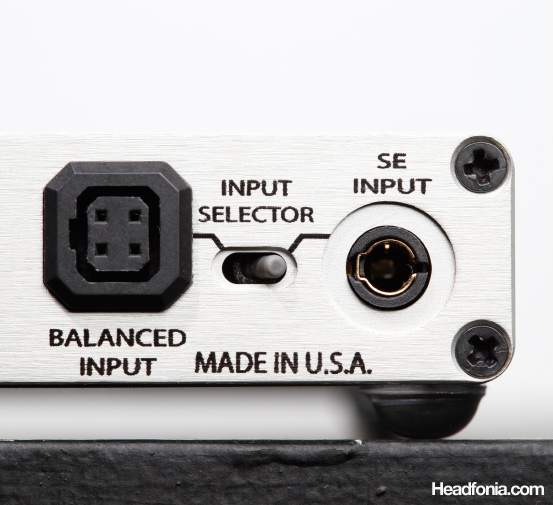
Input selector selects between the proper input being used. Do not forget to toggle the switch when changing inputs. On a second note, the L-angled Protector connector will bend to the right side, covering the input selector and a part of the 3.5mm input.
Anyway, for those of you who’ve read my Ibasso PB-2 review, you know that I had overlooked the fact of testing the amp with a balanced source, and so I’ll make up for it on this article.
The source that I use is a top-loading CEC TL51XZ CD Player that offers both unbalanced and balanced analog outputs. I used my reference copper interconnect cables to create identical cables to compare both the unbalanced and balanced inputs of the SR-71B: An RCA to 3.5mm, and an XLR to 4-pin Protector connector. For maximum transparency, the headphone used is the HD800 with Whiplash TWAg recable.
Depending on the source being used, the difference between unbalanced and balanced outputs are quite minimal. In some cases like on the Cambridge DacMagic, the unbalanced output is theoretically less transparent due to one extra stage that the unbalanced signal have to go through compared to the balanced signal. On my CEC TL51XZ, the only difference is some slight figures in THD and Noise. On the SR-71B’s side, the unbalanced input theoretically should be less pure since it goes through a phase splitter chip which many claims won’t be as good as a true balanced signal right out of the D/A chip. While I do believe that the simpler and shorter signal path will yield ultimate transparency, depending on the system being used to make the evaluation, often that difference is too little to be noticeable.
Now, going back to my little test rig with the CEC TL51XZ to the SR-71B to the Whiplash TWAg recabled HD800. A-Bing between balanced and unbalanced input signals to the SR-71B, the only difference that I can hear is a slightly wider soundstage with a balanced input, and a slightly thicker bottom frequency. The difference is there, but they’re so slight that a difference in source quality is bound to make a bigger impact than a lesser source boasting fully balanced outputs. It’s quite interesting that my observations on the Balanced Beta22 also reveals similar differences (though at a higher level of resolution): more bottom end body and a wider soundstage when being fed from a balanced source.
-update-
I forgot to mention that with a balanced source, you get twice of the amplitude of the original signal, hence the loudness (dB) gets doubled. In case you’re feeling that the amp is not pushing your headphones loud enough, then going to a balanced source would help to get things louder.
BALANCED vs UNBALANCED OUTPUT
Going between the unbalanced and balanced drive with the same headphone, mostly the improvements are similar to moving from an unbalanced source to a balanced source. Wider soundstage that fills in the whole cups of the HD800, where an unbalanced drive only gives me a noticeably smaller soundstage that cannot fill up the entire space of the HD800. You also get slightly fuller body on the low end, but more importantly is bass impact and slam factor has been improved. The amplifier feels much more energetic than if driving on single ended at the same volume level. I think this is the effect of the increased slew rate from four different amplifiers working simultaneously.
Single ended drive does have its own merits though. If you think that your headphone’s soundstage is wide enough, and that your music doesn’t require the added bass impact, then I want to mention that I did get a more coherent soundstage with better center focus than from the balanced drive.
Finally, like when using a balanced source, loudness level also gets doubled. This is not an effect of the quad amplifiers, but rather because of the phase splitter chip on the input side that effectively doubles the amplitude of the signal.
RSA SR-71B vs Ibasso PB-2
This time, I think Ibasso has done pretty well to steal the thunder from RSA. The PB-2 was also recently released, and it boasts an uncanny resemblance on features and specs. Quad opamps? Check. Quad buffers? Check. Rechargeable batteries? Check. Build quality? Check. Balanced signal generator from single ended inputs? Check. And to top everything off, Ibasso also boasts a higher voltage swing, a rollable opamp and buffer, and a pricetag that will make everyone thinks twice before ordering the SR-71B ($650 for the SR-71B vs $325 for the PB-2).
In audio, experienced readers would know that the price to performance curve is not linear. Actually, this also applies to computers (dollar versus clock speed, dollar versus memory capacity, etc), and automobiles (dollar versus 0-60 times, etc). Hence, experienced readers would know that it’s quite a long shot to expect the SR-71B at twice the price to offer twice the performance of the PB-2. Or looking from the other point of view, the PB-2 is probably going to be better than if you take the SR-71B and degrade its performance by 50%.
I think we all have to acknowledge Ibasso for the amount of improvements they’ve made to their portable amps. In the old days, nobody would have thought of comparing an Ibasso to an RSA amp, the latter universally acknowledged as the premium brand while the former is a cheap portable alternative from China. Ibasso surely have improved their build quality over time. Comparing the two amps side by side, it would really be unfair if I had said that one amp has a better build quality than the other. Somehow, I am still leaning a bit toward the SR-71B’s build and design, but I really don’t think it’s significant enough and it may just be my personal preference. I do want to give the SR-71B a plus point in terms of enclosure dimension. The slimmer and wider enclosure of the SR-71B makes for a better pairing together with the average Ipod, while the PB-2’s taller and longer dimension is not very friendly on the jeans pockets. The pulverization finish looks very slick, and although RSA’s anodized finish is a tad better in my eyes, I think they are just a matter of personal preferences. I have seen a number of cases where the silkscreen printing started to chip off on RSA amps, and though I have yet to see one Ibasso amp with the printing chipping off, though I’m not saying it won’t happen.
Other things that may matter to the user is the placement of gain switch and the ability of rolling opamps. If I am the type of person who loves tweaking, then the op-amp rolling capability of the PB-2 would be a strong point. Otherwise, the SR-71B works better as it’s more “plug-and-play”, and the placement of the gain switch at the rear panel is a big plus compared to the PB-2 where you need to open the enclosure everytime you want to change gain levels.
Now, what about the sound? The primary difference between the two amps is the sound signature, where the SR-71B maintains a warmer, darker, and heavier bottom end sound, the PB-2 less heavy on the bottom though not light and more low treble presence. Of course, while rolling opamps, you can “EQ” the PB-2 to be more trebly or more bassy, depending on what you’re using on the opamps and buffers. But even at the “darkest” and fullest bottom end setting with the stock opamp kits, the SR-71B still has a more solid bottom end body that I couldn’t find on the PB-2. On the other hand, if you are more into trebles, then the PB-2 will probably be a better suit for you.
I’ve been listening to both amps with the HD650 and the HD800, and I can say that I equally like them both. The added bottom end of the RSA can be nice in giving a more weighty and authoritative sound, but the Ibasso’s slightly lighter tone is better for picking up the pace of the music. Sometimes I like the added bottom end weight that the SR-71B gives me, even with the HD650. And at other times, I like the more neutral sound with the added treble of the PB-2. Of course you can equally nitpick the “faults” of both amps, if you want to. Some people would prefer a more relaxed treble than what the PB-2 offers, while others would prefer a less dark presentation than what you get with the SR-71B.
Technicalities wise, both amps are very similar. The PB-2 of course has a higher voltage swing, which would be useful if you ever attempt to drive the HE-6 with portable amps. But for standard 300 Ohm dynamic headphones like the Sennheisers, both the RSA and the Ibasso are equally good. Pairing them with my JH16 in balanced, the same thing pretty much applies, just in a much lower volume level.
END WORDS
Ray Samuels has always made great portable amps, and I am glad to see that the list of innovations continues to grow. When the RSA Protector was released, I remembered how revolutionary it was, being the first portable amp that offers balanced drive. With the SR-71B, that concept has been further improved, not only in power output but also in sonic qualities. This amp is a definite upgrade for Protector users. Compared to the SR-71A, I think both amps are great in their own regards. I personally am leaning more towards the SR-71A, but that’s just due to my music preference (and perhaps, age too!). However, when compared to the Ibasso PB-2, I think the pricing will be a very strong leverage for the Ibasso. Personally, I think the RSA SR-71B has the nicer built quality (if only slightly), and the overall packaging and features makes it the amp that I want more if pricing was not an issue.
Thanks for Mr. Ray Samuels and to my friend Peter Ong for the loaner units used in this review.
System used for review:
Headphones: JHAudio JH16Pro, Sennheiser HD650, HD800, Hifiman HE-6
Amplifiers: RSA SR-71B, SR-71A, Protector, Ibasso PB-2
Source: Hifiman HM-601, HM-602, Ipod Classic, CEC TL51XZ






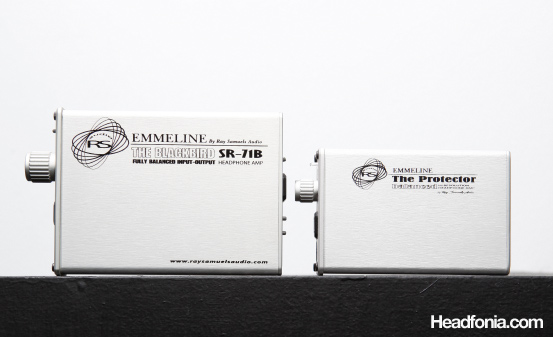
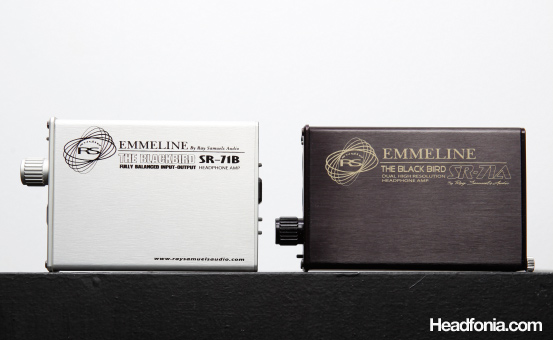
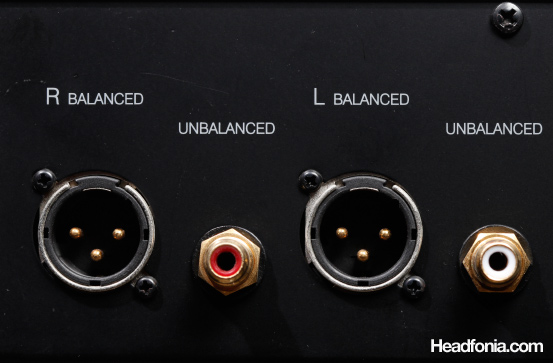
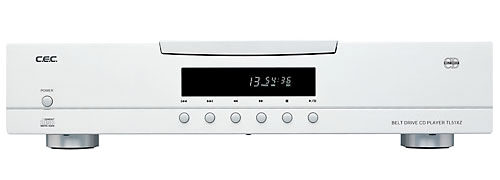
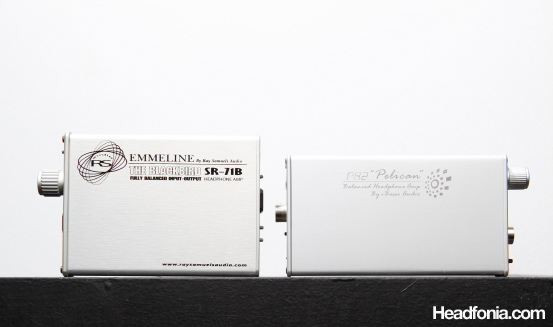
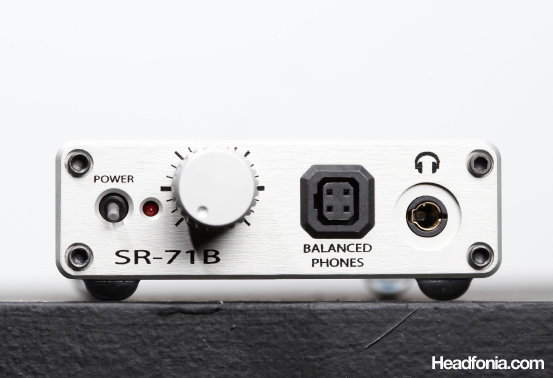
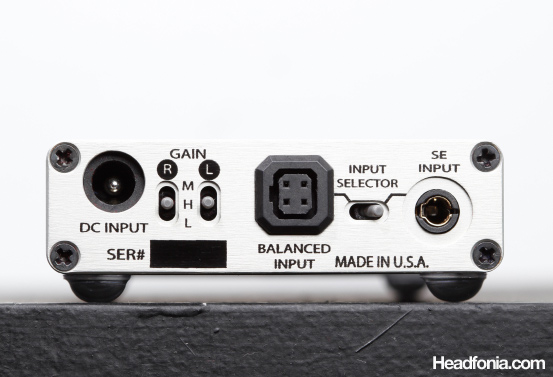
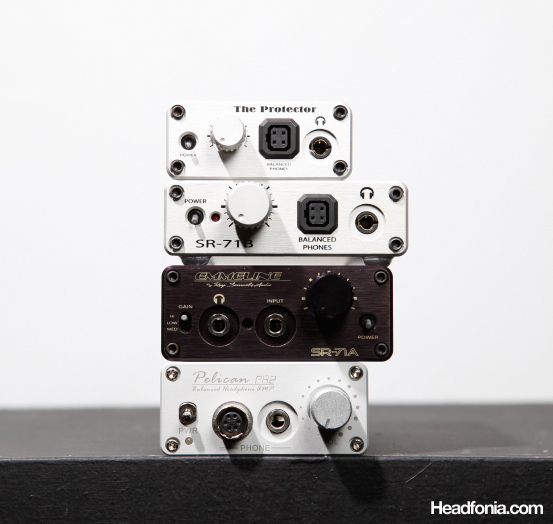
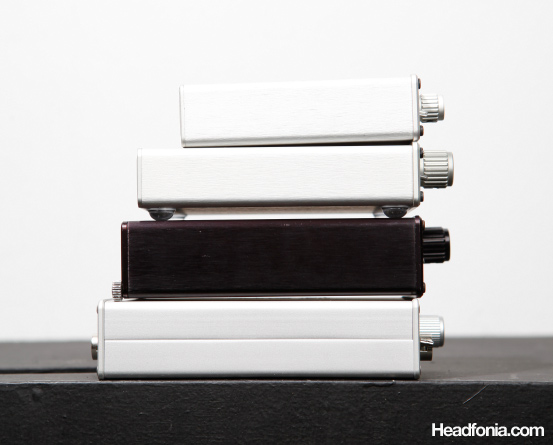
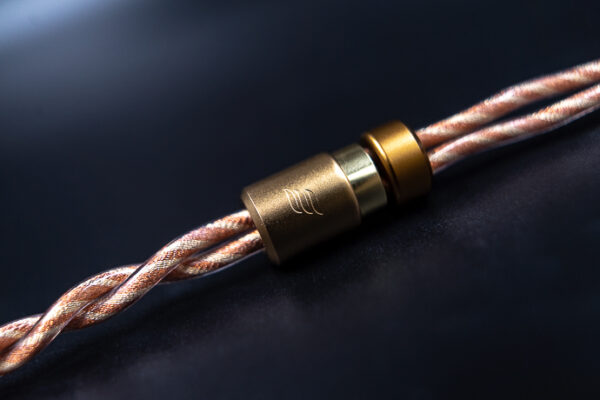
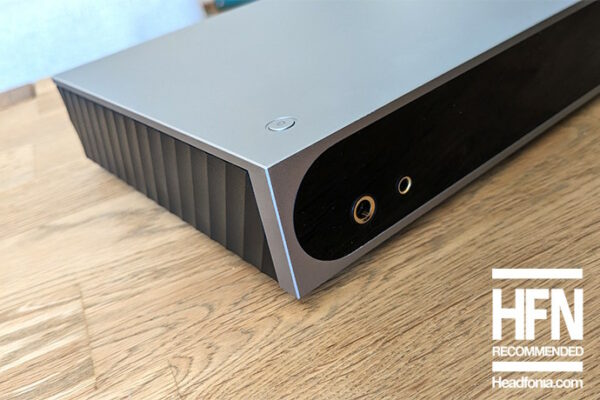
jendol
I definitely need to hear how good 71B now…
Anonymous
Yes you do!
George
Thanks for the review! It definitely works well with the HE-6 and HD600 that Ray had to tet it out. I still didn’t think either of the headphones had enough bass, but I am fairly sure I like a bassier sound than many. I am sure good closed cans such as the Ultrasone Pro 900 or a Denon would give me a sound I would love. I really likes everything about the sound except the bass, so I could just EQ it to my tastes anyway. I could also run the Isone Pro through the computer then.
Anonymous
Yes, both the HE-6 and HD600 is quite neutral and not bass heavy.
Earfonia
Thanks for the review Mike!
Just wondering, I saw you wrote more about comparison of unbalanced and balanced source. How about comparison of unbalanced and balanced headphones? Same source, same amplifier, how much different do you hear when you use unbalanced cable for HD800 compare to the balanced cable? Thanks!
Anonymous
Good question. I will test that out and let you know. I didn’t think
about using the amps in single ended because I think it defeats the
purpose of buying the amps (and paying the premium for having the
balanced feature) in the first place.
Anonymous
I’ve updated the article with the balanced vs unbalanced drive section. You can find it under the balanced vs unbalanced source area.
Earfonia
Thanks Mike! Not many people has balanced source, so if driving the headphones in balanced mode, even when using unbalanced source, can give some improvement, than people may consider this balanced amp, and going balance with their headphones. That’s my point 🙂
Anonymous
That’s a good point. Well, thanks for asking!
element
Nice review.
Would you recommend the SR-71B for someone who owns a pair of JH16?
Would you then recommend going balanced on the cable when the source is unbalanced? (i.e. iPod/iPhone)
Anonymous
Hi Element,
If you get the SR-71B, then FOR SURE go for the balanced! Otherwise you could’ve gotten a Mustang or Shadow and save a lot of money.
Every amp have their own signatures, and I really can’t make a recommendation until I know for sure what you’re looking for in an amp.
The balanced amps (Protector, 71B, PB-2) adds bass and a wider soundstage that gives an impression of a very BIG sound. On the other hand, the unbalanced, digital volume control amps (Shadow, Pico slim) gives you precision and control. That’s just a rough idea of the differences between amplifiers.
Anonymous
I think the SR71B is a good amp, and sure you can pair it with the JH16 for good results. Every amplifiers will have their own plus and minuses, and so the best pairing will depend on each person’s personal preference.
If you go with the 71B, definitely go for balanced, even if your source is an Iphone.
Anonymous
I think the SR71B is a good amp, and sure you can pair it with the JH16 for good results. Every amplifiers will have their own plus and minuses, and so the best pairing will depend on each person’s personal preference.
If you go with the 71B, definitely go for balanced, even if your source is an Iphone.
eugenius
Another solution to a problem that doesn’t exist: how to use a HD650 or maybe a Denon or a DX1000 on the road, where those headphones have no place.
Does it do something special on the JH16 or the UE bass heavy customs? Maybe that will be it’s saving grace.
Anonymous
It adds bass and widens the soundstage on the JH16.
Rudi0504
I have RS 71 B , the first time i drive all my IEM ( Westone UM 3 X, Westone 3, Sony EX 1000 ) in Unbalance mode and My SOURCE Iphone 4 G is also in unbalance mode.
Since last week i got very simple and cheap Solution with Cable Connector with balance
PLUG going to my RS 71 B and the other end is Female Plug for all My IEM.
It is works very well, insteed i bought exrtra Balance Cable for my UM 3 X.
and i believe better sound compare to my Cable Connector for universal BALANCE use to my
RS 71 B.
and to improve my Iphone 4 G i bought SOLO ( CLASS ), the sound Quality
( Sound Staging, Bass, Mid and Treble ) improve a lot like you by pass your Ipod.
I have already sent to Mike email, regarding the Mini to Mini and USB to LOD from ALO, because i wish can buy here in Jakarta.
and believe with these two Cable can improve more the Sound Quality through my SOLO
Hi Mike please answer my email two days ago, thank you
I hope can help all to improve their Sound Quality for BALANCE Amplifier like Protector and RS 71 B and the important think it is very CHEAP with this silver Cable Connector between my RS 71 B to my universal IEM
Cheers
Anonymous
Hi Rudi,
I didn’t get your email but if you make a balanced to female plug cable,
it is not a true balanced connection since the ground is joined on a
3.5mm female plug connector.
Rudi0504
Hi Mike
Thank you for your reply, could be i got the wrong email address
What i need to know , where Can i buy Mini To Mini and USB to LOD from ALO for my SOLO ( CLAS ) ?
Where Can I buy in Jakarta ?
Especially USB to LOD for my SOLO ( CLAS )
Cheers
Anonymous
Hi Rudi,
I think you will need to contact ALO directly to get those cables.
Guest
Is this HM-801 killer if balanced? Does it give more bass compared to HM-801 amp?
Anonymous
The SR-71B is an amplifier only. The HM-801 is a portable source and amplifier. The SR71B’s bass should be more powerful, but the texture and detail should be better on the HM-801’s direct out.
GUEST
Hi mike, should i buy this sr-71b or hp-p1 paired with ipod touch? Or maybe you have other recommendation? My headphone is ED8. Thanks
Anonymous
If you’re big on bass, then definitely go with the SR71-B. The HP-P1 is about refinement and resolution.
GUEST
I am more liking the sr-71b but the problem is it needs to be balanced. Do you know if the stock cable plug of Ed8 can be terminated to rsa plug?
Alhilal
Hi Mike, i currently have HM-801 and Senn HD650.
How would you compare HM-801 with iPod+CLAS+SR-71B combo?
And what benefit could i get if i add SR-71B to power HM-801?
Thanks
Anonymous
The CLAS+71B would give you more bass quantity, more impactful bass. The HM-801 would give you better refinement.
I wouldn’t recommend adding the SR71-B to the HM-801. Please read the Usual Suspects article on my updated thoughts on portable balanced amps.
Swampax
I’m trying to decide if i should switch my PB2+DB2 to a SR 71B. I quite like the sound of my PB2 but the shape of it isn’t very handy for portable use. I’m a bit scared by the description of the RSA house-sound though, because las time i tried something highly praised, described to have a dark sound signature, was the AIAIAI TMA-1 and i wound it horridly muffled and congested sounding (my description of dark sound sig’s). I have never heard a RSA amp, but if anyone knows if its so-called “darkness” is anything like that of the TMA-1 for example, I would really like to hear from you – thanks 🙂
Anonymous
Well if you want to try the RSA sound, you can start with something relatively basic like the RSA Shadow/Mustang/Hornet, you don’t need to go all the way to the SR71-B.
The dark sound is not going to be as dark as the TMA-1, so don’t worry. 🙂
Anonymous
Well if you want to try the RSA sound, you can start with something relatively basic like the RSA Shadow/Mustang/Hornet, you don’t need to go all the way to the SR71-B.
The dark sound is not going to be as dark as the TMA-1, so don’t worry. 🙂
Tristan Tom
It’s not like it’s going to be muddy or anything. Just a more smooth relaxed sound rather than a treblely-sound. That is what he means by ‘dark’.
Victor Halgaard
Thank you for the response, but its a year ago since I had the iBasso, and tried the SR71b now 🙂 I ended up with the Alo Rx Mk3b, because the SR71b didn’t really impress me in any way compared to the iBasso which cost half its price…
Jonathan K
Hi I am new to this hobby but I recently purchased a sr71b for shure se535 and for my cd900st. I am using fostex hpp1 as dac and sr71b as the amp, however, I don’t think I can mod my cd900st to being balanced so I was wondering whether the sr71b single ended is really that bad as my friend told me that i basso D12 is better than sr71b in single ended which I would be quite sad because I spent so much money and the single ended is actually worse than a D12 which cost perhaps 3 times less, so I would like to ask for your opinion. Sorry for the inconvenience caused.
Mike
Hi Jon,
The D12 being better than the 71B part, I think that’s necessarily true. The part about you shouldn’t have gotten the 71B if you weren’t looking for its balanced features, true.
But you’ve bought the amp and if I’m you I’d worry about it and just enjoy the music.
Jonathan K
Hi Mike Thank you very much for your reply, will do! May I ask in terms of how much is the D12 better 71b single and in what way?
Mike
Sorry I meant that’s NOT necessarily true.
Jonathan K
Oh great! Thanks a lot!
Patrick Michael Graf Murray
So if I have ortho headphones that require that voltage then this is the way to go for balance portable amp for a good price? And you feel as though it is on par with the SR-71B that is really saying something?
Headfonia_L.
There is also the Duet that sound great in balanced with orthos
Jonathan K
Hi Mike, its been a while since I last posted in this post, I now have bought a sennheiser hd600 whilst using hpp1 fostex as dac and running the amp with the sr71b. I am currently abroad and using a 3.5 to rsa balanced converter plug to connect, was wondering which gain setting would you recommend when using the hd600, medium gain or high gain for the 300 ohm on the blackbird. I am scared if I go for the high gain, it introduces more distortion. Does the 600 require that much power?
Boogie6301
Hi Mike,
I forgot how many times I’ve read this review together with the other high-end portable amps before I ended up getting the Vorzuge Pure-II to pair with my AK120-II. I have the LCD3 and T1 and needed a powerful enough portable amp to bring in headfi buddy get togethers.
To cut the story short I have since sold my AK120-II and Vorzuge Pure-II. I’ve taken a leap of faith and went for the Geek Wave crowd funding project. I’m now looking for a setup until the GW arrives…who knows when.
I opted for an iMod and looking for portable amps to pair with my LCD3 and T1. These two cans have very different signatures so I don’t think a single amp can bring out the best from both. I’m considering the SR71b (borrowed from a friend) to pair with the T1. I’ve auditioned this pairing and the iMod+SR71B+T1 is a match made in heaven…to my ears at least.
When I tried the LCD3 to the iMod+SR71b it didn’t sound that great to me. It seems the dark/warm signature of the SR71b is too much for the bass heavy LCD3. I’d like to get your impressions with the iMod+SR71b+LCD3. I believe you have the LCD2 and that should be close enough to the LCD3.
From another review I’m considering getting the Portaphile 627x. Based on your review the bass on the 627x is relatively lacking. Could the 627x be a better pairing with the iMod and LCD3?